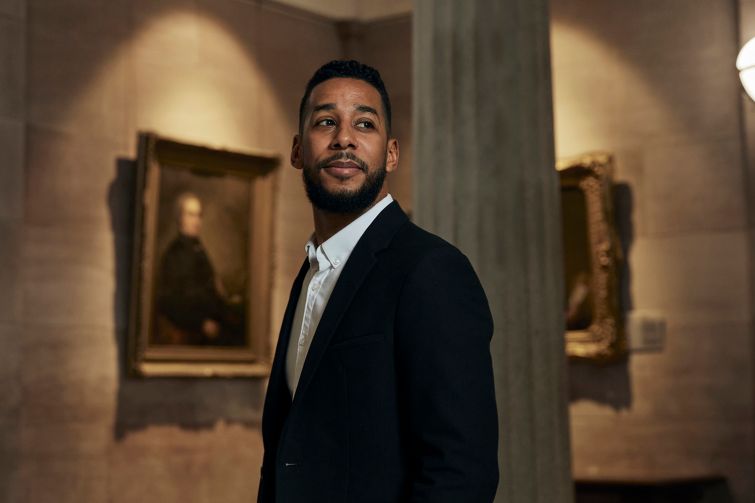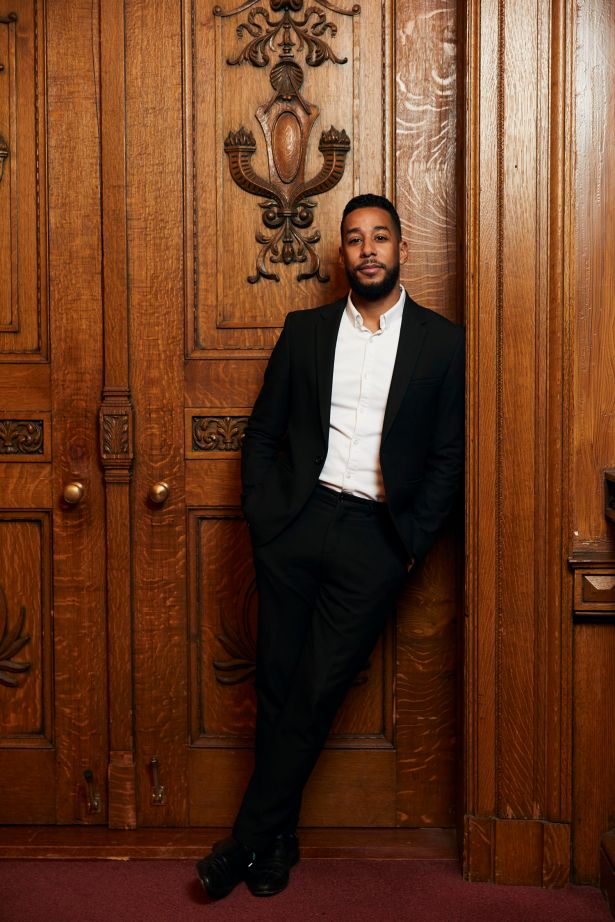Brooklyn BP Reynoso Plans to Combat NIMBYism With Data
Brooklyn Borough President Antonio Reynoso breaks down his plan for Kings County real estate
By Mark Hallum February 1, 2024 6:00 am
reprints
Antonio Reynoso wants to pierce the veil of NIMBYism in New York City and believes he can break the culture of “no” with the right presentation of data.
The former City Council member from north Brooklyn has used his first two years as Brooklyn borough president to compile up to 100 pages of maps and 200 pages total on development patterns in the borough, hoping that when politicians and community members step up to oppose new housing proposals, they will have a tool to understand the implications of building — or not building.
Known as the Comprehensive Plan for Brooklyn, Reynoso’s “living document” maps out almost every imaginable form of demographic data, from density of foreign-born people to median household income to the amount of available housing or schools, even where people are prone to certain diseases.
“One of the things we want to do is change the culture of how people think about development in New York City, but specifically in Brooklyn,” Reynoso told Commercial Observer. “We always felt that by showing people through comprehensive planning the value of development, that we could change this NIMBY culture that exists in the City Council. A big part of it is allowing someone in Bay Ridge, in which they often vote no on more than 90 units of housing, to be able to show them that in Williamsburg and Bushwick [developers] have built almost 20,000 units of housing. There’s no reason why 1,000, 2,000 or 3,000 units should scare them.”
As an example, Reynoso points to the aforementioned Bay Ridge, where seven new schools are being built in the next few years to accommodate the neighborhood’s growing population. This is something that has not been reflected on the housing side of things in the mostly single-family housing enclave.

But additional housing is certainly needed, according to Reynoso, as many homes in the area have three generations of a family living under a single roof. Just as common as the growing number of immigrants is the growing number of New Yorkers trying to get their kids into the high-quality schools in the area.
While the New York City School Construction Authority has caught on and prioritized expanding classroom space, housing projects tend to die in those committees that often rely on anecdotal information when deciding whether to accept or reject a building proposal for multifamily, according to the borough president.
“Someone in Bay Ridge sees two cranes and they think that development is booming. And, in Williamsburg, there are like 18 cranes a day. No, it’s not booming. This is actually very slow growth. But they never get that perspective,” Reynoso said. “I want people to use actual data and information to dictate policy, which doesn’t happen right now. … The community board will use Miss Johnson’s testimony to make a decision based on that testimony, and then the council member will get a recommendation from the community board to stop the development versus using Miss Johnson’s experience to mitigate and account for the concerns that she might have.”
Reynoso pushed for the Department of City Planning (DCP) to adopt a comprehensive plan for the whole city, somewhat like his report on Brooklyn, but said his recommendation received a cold reception from former Mayor Bill de Blasio’s administration. While he has not yet provided the report to the agency under the leadership of DCP Commissioner Dan Garodnick (who briefly overlapped with Reynoso on the City Council), Reynoso hopes that the existence of a comprehensive plan will pique the agency’s interest.
After all, plenty of large cities across the globe have adopted comprehensive plans: London Plan, Hong Kong 2030, Lagos the Development Plan 2052, Sao Paulo the Urban Management SP, Sydney the Greater Sydney Region Plan, Delhi the Development Authority Master Plan, Mexico City the General Development Plan and the Bogotá the Territorial Arrangement Plan 2035.
“I made an attempt to have comprehensive planning be mandated by the City of New York every 10 years through a charter mandate,” Reynoso said. “DCP fought it, which is remarkable to me. A comprehensive planning document, I always thought, would be the epitome of what you would want to do as a city planner. … I was sad and disappointed. They didn’t want to do it. They thought it was too complicated.”

If Reynoso can put together a document for Brooklyn with a staff of only three people, he said, the city should be more than able to put the resources together for all five boroughs. All that seems to be missing is political willpower.
As for the Adams administration, Reynoso isn’t sure how well city staff members are going to welcome a borough president recommending that all of New York take a new approach to city planning.
Another major barrier that needs to be torn down, according to Reynoso, is member deference in the City Council. Since time immemorial, the unwritten rule of New York City politics is that if you have a seat in the chamber and a land use item is up for a vote, the body as a whole will often vote in line with the council member who represents the district in which the project is being proposed.
In November 2021, faith in council member deference was shaken when then-Councilmember Ben Kallos voted against approving the new location for the New York Blood Center at 310 East 67th Street in the Upper East Side. Kallos and political spectators were shocked when the project was overwhelmingly approved by a vote of 43 to 5.
“To pave the way for this vote, which bucked member deference, much was done to paint me as an unreasonable NIMBY and the blood supply as at risk,” Kallos said at the time.
Deference in the City Council ended up being more dormant than dead, however.
Tensions exploded between developer Bruce Teitelbaum and now-former Councilmember Kristin Richardson Jordan of Harlem in 2021 and 2022 over Teitelbaum’s proposal to build over 900 units of housing on 145th Street. Amid intense backlash from the local elected official, Teitelbaum withdrew his application for the project known as One45 before it could even make it to the full council for a vote.
Instead of getting a significant infusion of housing, Harlem residents were faced with Teitelbaum using the land for a truck depot instead, something Richardson Jordan also openly opposed. The first-term council member took much of the blame for possibly exacerbating the city’s housing shortage and chose not to run for re-election.
Since then, Teitelbaum has resubmitted his application with some changes that include another tower for senior housing.
“If a member decides that they don’t care about any of that and that they want to control their neighborhood or the little area that they represent, they can do that,” Reynoso said. “What I’m hoping, though, is that other council members will look at this document and say, ‘Hey, wait a minute. I brought 15,000 units of housing and you brought 70. That’s not acceptable. You have to do your part. I’m not going to allow for my deference to run the show here when you’re not contributing at all and we’re making a lot of sacrifices.’ ”
Reynoso, who has spent much of his professional life in politics and government, has not always been so supportive of development.
“There was a time in my political career where I didn’t like significant development. I was afraid it would lead to gentrification — and I think it did in Williamsburg. It’s because it was happening exclusively there,” Reynoso said. “But, if we were building everywhere in the city — the Lower East Side, western Queens, in other parts of Brooklyn — people would have more options on where they need to go.”
And Reynoso isn’t pushing for outsized growth, either. He’s hoping modest growth will come out of the comprehensive plan in which large batches of smaller buildings spring up rather than single towers that would be out of place in some communities. For the record, though, Harlem’s One45 development would have gotten the greenlight in Reynoso’s book for its more modest heights and the affordable housing component.
Mark Hallum can be reached at mhallum@commercialobserver.com.


